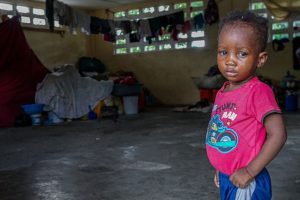As long-term warming and sea level rise accelerate, extreme weather events and climate shocks in Latin America and the Caribbean they intensify in periodicity and severity.
A new regional report of the World Meteorological Organization (WMO) shows that in the last 30 years, temperatures have increased by an average of 0.2 °C per decade, the highest rate on record.
The study highlights the vicious circle of increasing impacts on countries and local communities, citing as an example that the prolonged drought led to a decline in hydroelectric production in large areas of South Americar which, in turn, led to a sharp increase in demand for fossil fuels in a region with great untapped potential for renewable energy.
Furthermore, it mentions that extreme heat combined with dry soils led to unprecedented wildfires in the height of summer 2022, causing carbon dioxide emissions to reach their highest levels in the last 20 years and, consequently, temperatures to be even higher.
The WMO also advises that Melting glaciers have worsened, threatening ecosystems and the future water security of millions of people. In the summer of 2022, there was a near total loss of snow cover on the glaciers of the central Andes, so that dirtier and darker layers of the glaciers absorbed more solar radiation, which in turn accelerated melting.
Multi-million dollar deaths and economic losses
“Tropical cyclones, heavy rainfall and flooding, as well as severe multi-year droughts, caused multi-billion dollar loss of life and economic damage through 2022. Increasing sea level rise and warming of the oceans pose increasing risks to coastal livelihoods, ecosystems and economies“warned the WMO Secretary General.
Petteri Taalas explained that many of the extreme events were influenced by the long-lasting episode of La Niña, although he clarified that they are also characteristic of climate change due to human activity.
The head of the organization announced that a new episode of El Niño will drive up temperatures and bring more extreme weather events and affirmed that for this reason the Early Warnings for All initiative will be essential to protect lives and livelihoods.

Renewable energy potential
For the WMO, the priority sectors for adaptation to climate change and mitigation of its effects in Latin America and the Caribbean are agriculture and food security, as well as energy.
The report highlights the impacts of persistent droughts the region in agricultural production and the untapped potential of renewable energy, especially solar and wind resources.
Latin America and the Caribbean have a high share of modern renewables in total final energy consumption, mainly due to hydropower. However, there is also the possibility of taking advantage of solar and wind resources of the region, which until 2020 represented only 16% of the total generation of renewable energies.
Food production
The UN agency recalled that the region plays a fundamental role in the production of food and the provision of ecosystem services that benefit the whole planet.
On the other hand, he stresses that it is very vulnerable to climatic risks since about three quarters of the population lives in informal urban settlements and that about 8% of the people are undernourished.
In this regard, WMO emphasized the importance of national meteorological and hydrological services and regional climate centers in supporting adaptation and mitigation of the effects of global warming.













